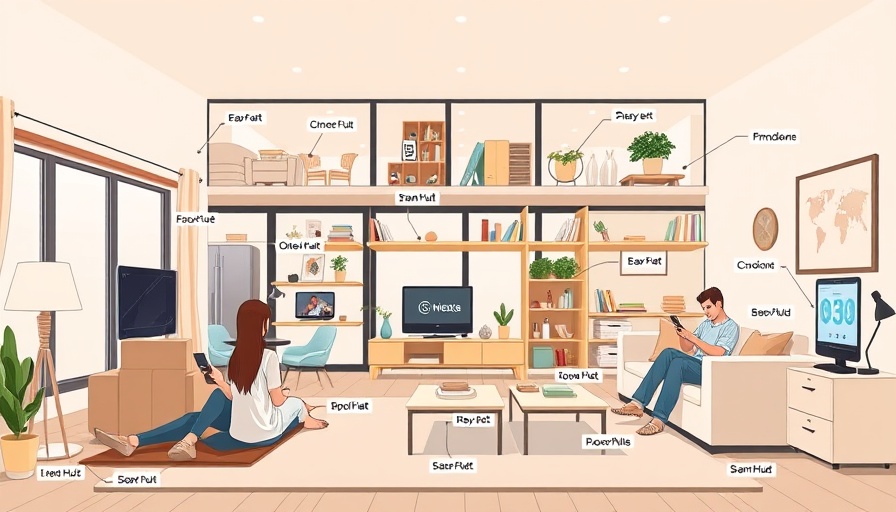
Future-Proofing Homes: Embracing Flexibility in Design
The landscape of homeownership is evolving. With life’s uncertainties—from job changes to family dynamics—it’s essential to develop floor plans that can adapt to changing needs. The concept of designing homes that are versatile allows families to comfortably navigate through life’s various stages.
Creating Versatile Spaces for All
Open floor plans and adaptable spaces are no longer just design trends, but necessities. These layouts enable homeowners to configure their environments quickly based on immediate needs. For example, families can easily transition from quiet family dinners to bustling gatherings without extensive renovations. Enhancing sound quality through strategic acoustics—like soundproof doors—can also maintain a serene atmosphere amidst a busy household.
Prioritizing Safety: A Multigenerational Approach
As multigenerational households become more common, design choices must prioritize safety for all ages. For instance, installing secure railings, rounded countertops, and non-slip flooring are essential for keeping both toddlers and seniors safe. Such considerations empower families to coexist harmoniously under one roof while addressing the specific needs of each generation.
Durability Meets Style in Home Design
In today’s fast-paced world, durability is a critical component of effective home design. Busy families face the challenge of managing numerous responsibilities, typically resulting in less time and energy for routine maintenance. Using innovative materials like engineered quartz for countertops and fiber cement siding not only reduces upkeep but also offers stylish aesthetics. These long-lasting solutions can withstand the test of time while requiring minimal maintenance, ensuring homes remain beautiful and functional year after year.
Energy Efficiency: Winning for Homeowners and the Planet
The demand for energy-efficient homes is on the rise, driven by a collective consciousness about climate change. Energizing floor plans incorporate sustainable features such as insulated windows and solar panels, which lower utility bills and contribute positively to the environment. This aligns homeowner interests with broader ecological objectives, creating a mutually beneficial scenario that encourages sustainable living.
Final Thoughts: Investing in Future-Ready Homes
As the future unpredictably unfolds, investing in homes designed with adaptability, safety, and energy efficiency in mind is not just a smart choice but a necessary one. Home service professionals must stay attuned to these evolving trends to effectively meet customer demands and ensure the properties reflect modern living standards.
 Add Row
Add Row  Add Element
Add Element 


 Add Row
Add Row  Add
Add 

Write A Comment